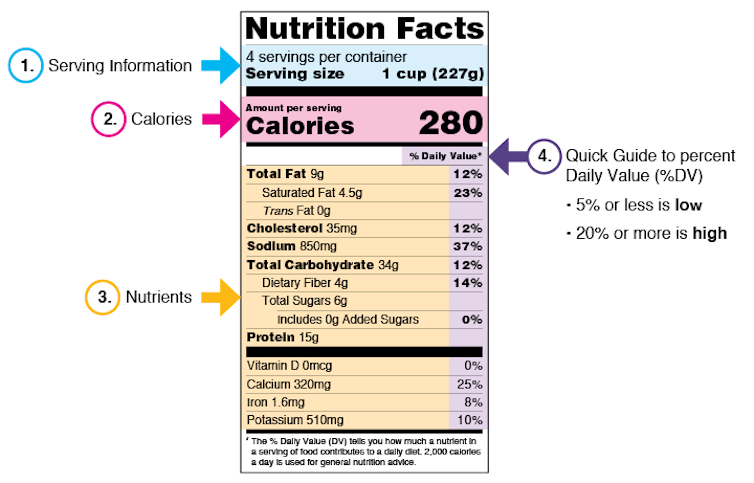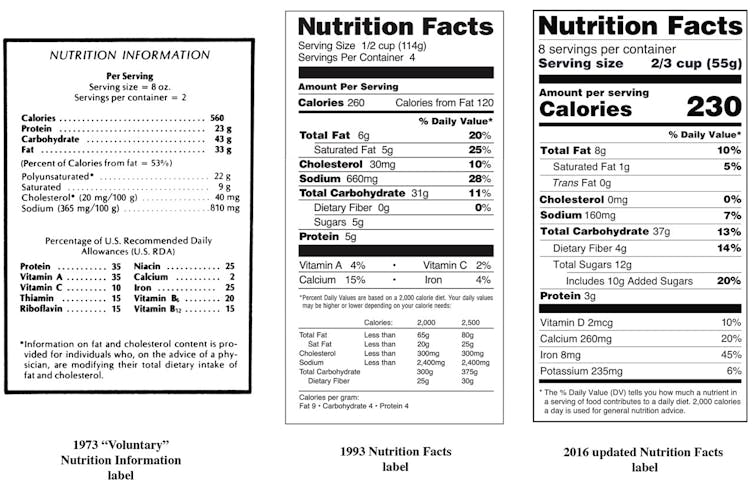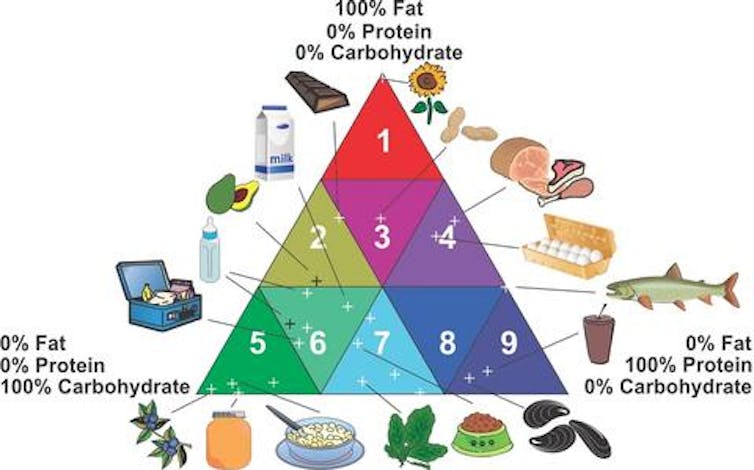The Nutrition Facts label, which is a box of black and white information found on almost every packaged food product in the US since 1994, has recently become a symbol of consumer transparency.
From Apple’s «Privacy Nutrition Labels» that reveal how smartphone devices handle user data, to «Clothing Labels» that confirm ethical declarations on clothing, policy advocates across the The industry is calling for «Nutrition Facts» as a model for empowering consumers and enabling socially responsible marketing. . They argue that clear information corrections can solve many of the problems associated with markets.
However this common everyday product label actually has a complex heritage.
I study food law and food culture and became interested in the Nutrition Facts label while researching the history of the Food and Drug Administration’s policies on food standards and labeling. In 1990, Congress passed the Nutrition Labeling and Education Act, which mandated nutrition labeling on all packaged foods to help address growing concerns about the rate of chronic diseases associated with and junk food. The FDA introduced its «Nutrition Facts» panel in 1993 as a public health tool to empower consumers to make informed choices.
The clear purpose of the Nutrition Facts label is for consumers to learn the nutritional value of a food. However, in reality, this brand has done more than just inform consumers. It also involves many political and technical conflicts over how to convert food into nutrients that meet the diverse needs of the American public.
Where does «% Daily Values» come from?
The daily value, or DV, percentages on the label don’t all come from the same source. This is indicative of the various public health targets for the label.
Recommended intakes for micronutrients such as vitamins are based on the Recommended Dietary Allowances, or RDAs, from the National Academies of Sciences Engineering and Medicine. Vitamin RDAs were developed due to historical concerns about malnutrition and meeting minimum requirements.
Percentages of the daily value of macronutrients – carbs, fat and protein – are based on the US Department of Agriculture’s Dietary Guidelines. DVs of macronutrients have registered a renewed concern about overeating and a focus on «bad nutrition» that encourages high levels of intake.
DVs indicate two different causes of concern. The micronutrient numbers represent the minimum: the minimum vitamin requirements that a child must meet to avoid malnutrition. Macronutrient numbers, on the other hand, are a ceiling: a maximum that adults should avoid exceeding if they want to prevent future health problems caused by eating too much sodium or fatty foods.

Food and Drug Administration
Why 2,000 calories?
The FDA almost used 2,350 calories as the basis for calculating daily values, because it was the recommended calorie requirement of Americans four years of age and older. But after pushback from health groups concerned that a higher baseline could encourage excessive consumption, the FDA settled on 2,000 calories.
FDA officials felt that this number is unlikely to be «misunderstood as an individual target since the round number has limited interpretation.» This means that 2,000 calories is not really the goal of most American consumers reading the label. Instead, it’s an example of public health concern with compounded risks — what one scientist called «treating sick people and not sick people.»
By choosing a round number that was easy to calculate, and a calorie count lower than the average American, FDA officials favored efficiency and utility over accuracy and objective. Advocating for fewer than 2,000 calories, they said, could end Americans’ tendency to overeat and do more good than harm to the general population.
Who decides the size of the service?
According to the Nutrition Labeling and Education Act of 1990, food sizes must reflect «usual amounts.»
In fact, this includes regular discussions between the FDA, the United States Department of Agriculture – which also publishes the majority of food guide tools such as MyPlate – and food manufacturers. Each conducts research on consumer expectations and food consumption data, considering how food is prepared and «often eaten.»
The serving size is also determined by the product packaging. For example, a soda can generally be considered a single-serving container and therefore only serves one, regardless of how many fluid ounces it contains.

Right Frohlich
What’s in a name?
This label was often called «Nutrition Standards» or «Nutrition Guidelines» to emphasize that the Daily Values were recommendations. Then FDA Deputy Commissioner Mike Taylor proposed «Nutrition Facts» to sound legally and scientifically neutral.
A new design – black Helvetica typeface against a white background, using subscripts and hairlines for legibility – and a strong headline helped establish «Nutrition Facts» as a well-known brand government.
This led to imitators in other policy areas: first «Drug Facts» for over-the-counter drugs, then consumer protection initiatives in various technology industries, such as the Federal Communications Commission » Broadband Facts» and «AI Nutrition Facts.»
The Nutrition Facts panel has remained stable since the 1990s, although there have been updates such as adding lines for trans fat in 2002 and for added sugars in 2016 to reflect future trends. first in public life.
New ways to read information
Creating the Nutrition Facts label required building a completely new set of tools for nutritional information. Translating the diverse American diet into a consistent set of common nutrients required new measures, test methods, and common references.

National Institute of Standards and Technology
The main player in the development of those technical structures was the Association of Official Analytical Chemists. In the early 1990s, the AOAC Task Force developed a food triangle matrix that classifies foods based on their amounts of carbohydrates, fats, and proteins. The goal was to find accurate ways to measure nutritional properties such as the amount of calories or sugar, as the composition of the food would affect how well each test worked.
Here’s the Nutrition Facts Label
Today, public and private partnerships have made this version of food into simplified nutrient profiles a step further by making nutrition facts clear and playful. USDA FoodData Central provides extensive information on nutrient profiles for individual ingredients that manufacturers use to calculate Nutrition Facts for fresh packaged foods. This database also powers many food and nutrition resources.
Analytical tools developed for the Nutrition Facts label helped form the foundation of today’s digital nutrition platforms. But critics argue that these databases confirm the view of limiting food to the extreme as only the sum of its nutrients, ignoring how different types of food take – such as its moisture, materials with fibers or porous components – affect the way the body uses nutrients.
Indeed, many nutrition researchers concerned about the negative health effects of modern processed foods now refer to the food matrix to emphasize exactly the opposite of what the AOAC wants in the corner. -the triad of food: the need for a general understanding of how food creates health.
Ironically, the biggest impact of the Nutrition Facts label may have been to drive the food industry to change products to achieve appealing nutrient facts – even if consumers weren’t reading the labels closely. who While envisioned as an educational tool, I believe that the Nutrition Facts label has in practice served as marketing infrastructure, organizing the food supply to meet changing dietary patterns and public health goals. long before consumers find that food in a supermarket.
#Nutrition #Facts #report #complex #legacy #historian #explains #science #politics #translating #food #information

